Benchmarks: Crysis Warhead, Crysis 2
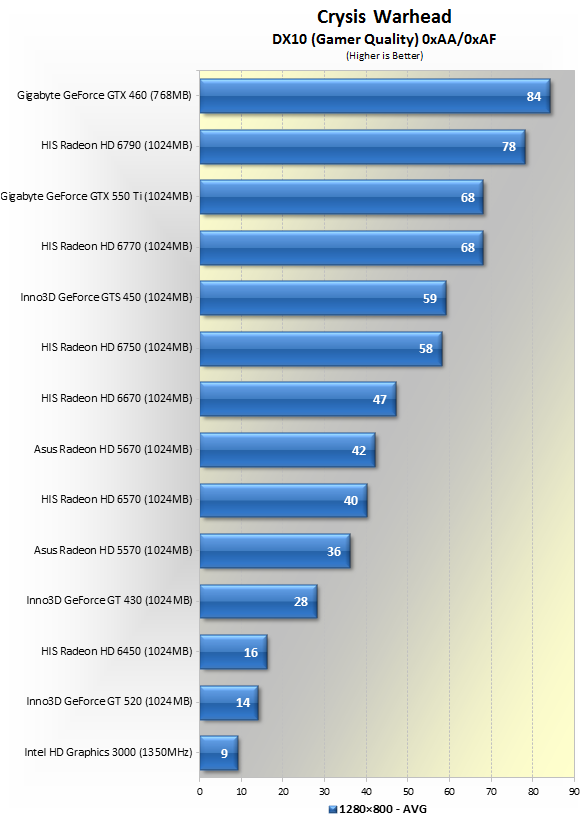
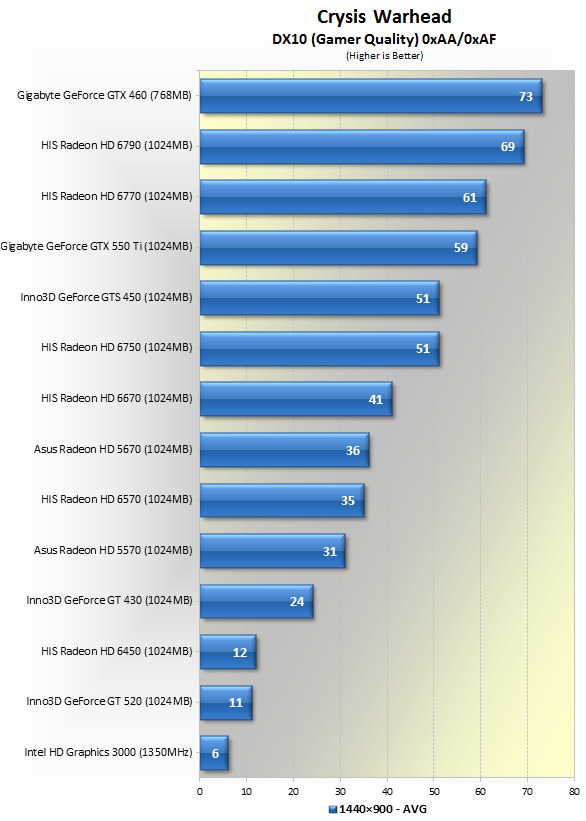

Using the medium quality preset – otherwise known as "gamer" – with anti-aliasing and anisotropic filtering disabled, we managed to achieve reasonable performance with many of the budget cards when playing at 1280x800, 1440x900 and 1680x1050 resolutions.
Rendering 57fps at 1680x1050, Nvidia's GTX 460 was the quickest card tested in Crysis, edging ahead of the HD 6790 about 3fps. Performance declines quickly after the 6790 with the 6770 averaging 47fps, which is about 2% faster than the more expensive GTX 550 Ti.
The GTS 450 and HD 6750 managed to average 40fps and at $110 they were 30% slower than the GTX 460 while being 27% cheaper. After the HD 6670's 32fps showing, performance dips below the 30fps threshold, making it hard to recommend the cards for gaming.
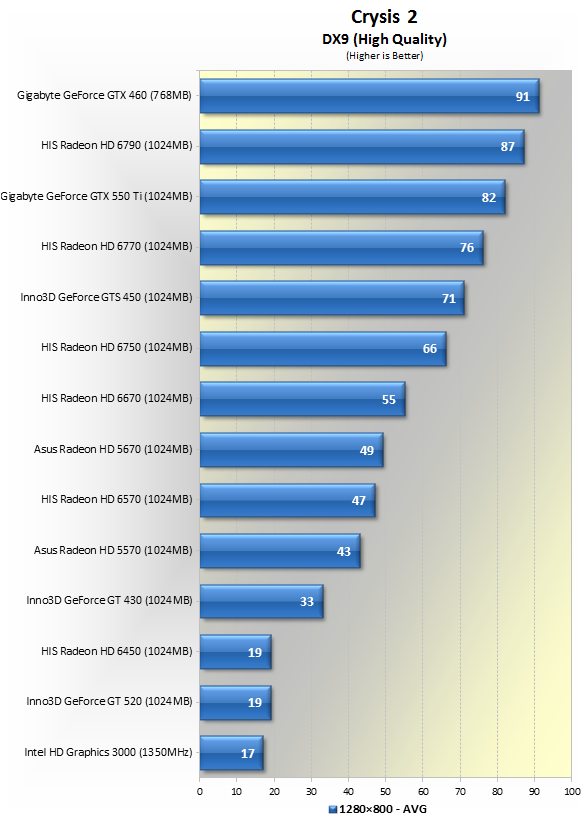
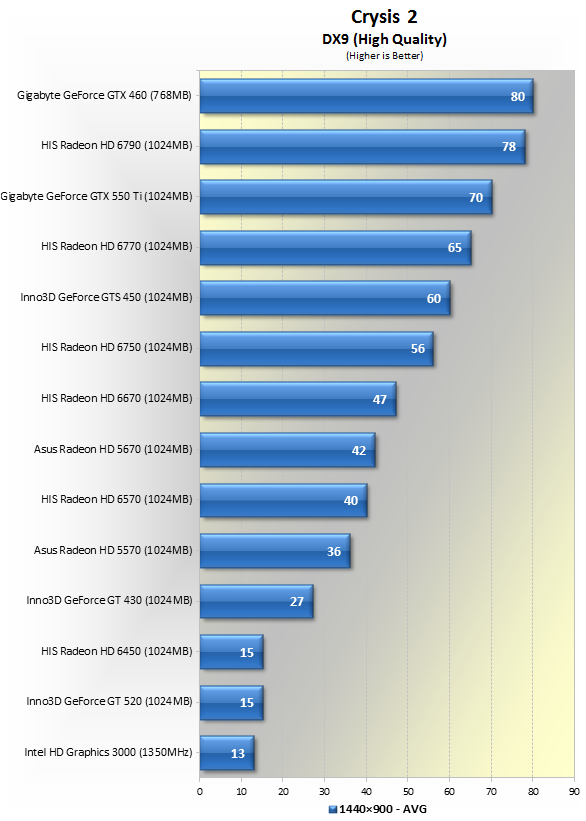
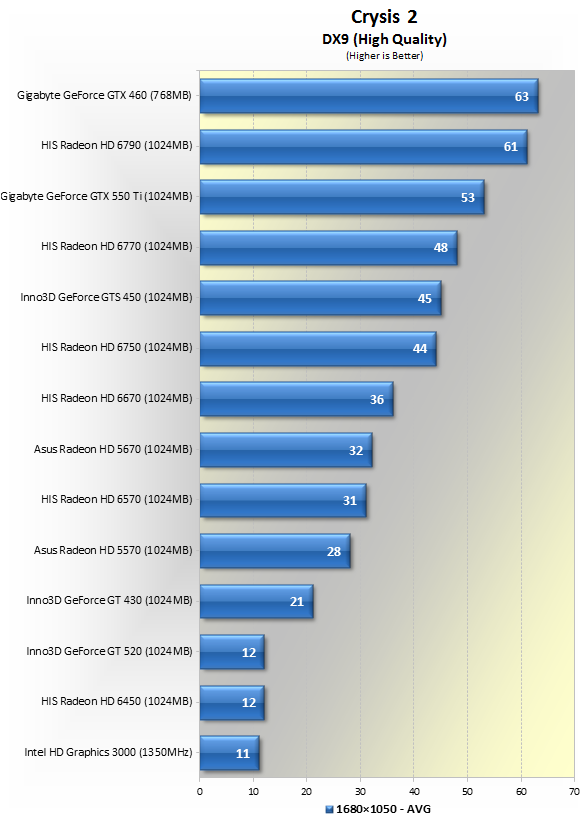
For reasons unknown to us, Crysis 2 is still a DX9-only title, but Crytek still reportedly plans to release a DX11 patch sometime this year. The game has been heavily criticized for being a console port and that is somewhat evidenced by the performance seen above.
Nearly all of the low-end GPUs presented playable performance at 1280x800 with anti-aliasing disabled (the PS3 and Xbox 360 are limited to 1280x720 and no AA). Even the GT 430 mustered 33fps, showing how underwhelming the GPU power of today's consoles is.
The performance does slip a little at 1680x1050, but the above trends remain much the same. The GTX 460 was again the fastest while the HD 6790 was 15% faster than the GTX 550 Ti. The HD 6770 fared 9% better than the HD 6750 and 21% worse than the HD 6790.
The Radeon HD 5670 and HD 6570 delivered practically the same numbers with a little over 30fps, while the HD 5570 offered only 28fps. Things degraded to a completely unplayable state when looking at the GT 520 and HD 6450, with each squeezing out a dismal 12fps.